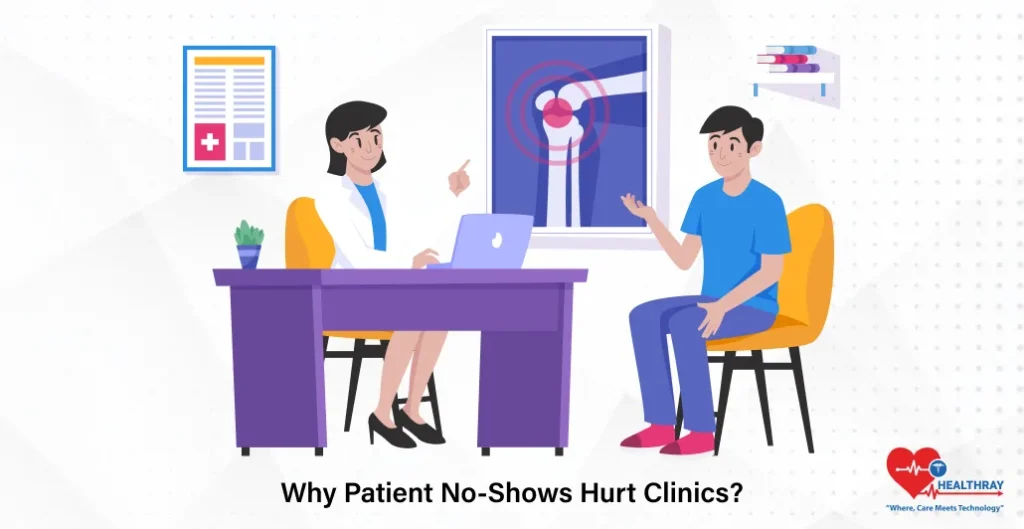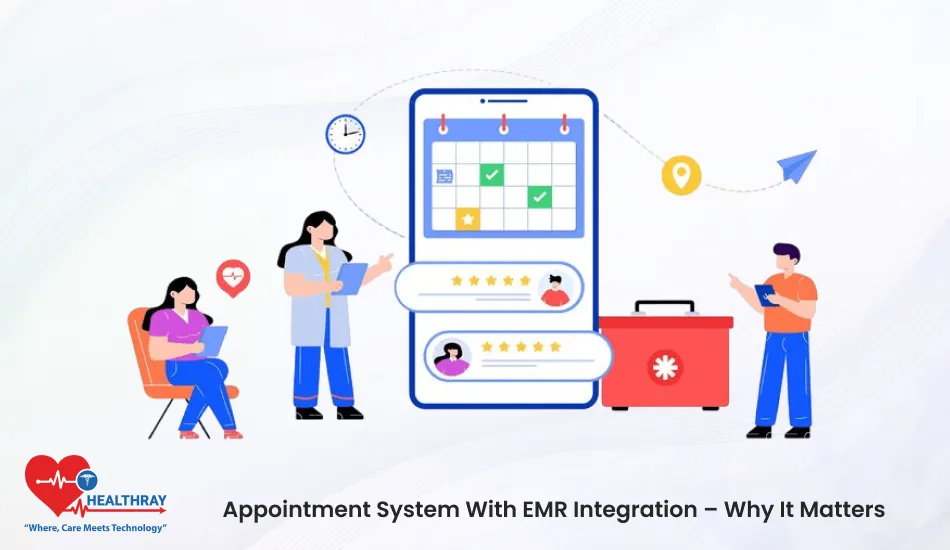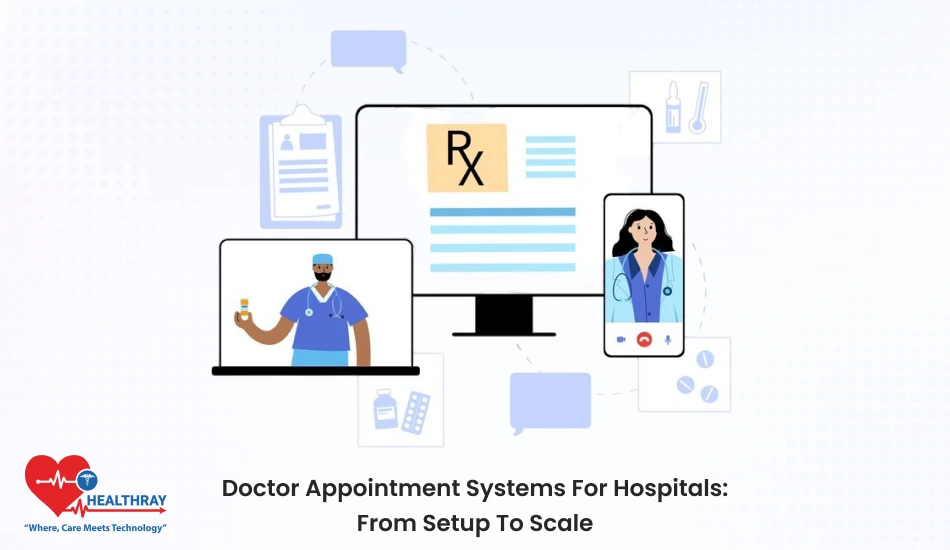Quick Summary
Smart appointment reminders make clinic work easy. They help patients remember visits and keep schedules full. With automation, messages go out on time without anyone worrying. Clinics stay calm, patients show up, and everyone saves time. This small change brings big results across the clinic.
Introduction
Your clinic would have witnessed that your doctors wait up, but the patient never shows up. There are no calls or no warning. They are just gone.
This does not happen sometimes, but way too often. This is not just infuriating, but it also costs money, wastes time, and energy. It even leaves other patients who needed those slots stuck on waiting lists.
But this problem can be flipped by appointment reminders and automation.
This little combo can completely change how the clinic works. It is a little nudge that lets patients not forget about their appointments. So there are fewer “no-shows”.
Check this blog to understand how this works, why it should be part of your clinic management software, and how clinics can make it part of their daily routine.
Why Patient No-Shows Hurt Clinics?

There are many reasons why people miss their appointments. Sometimes they forget, or sometimes they even panic at the last moment. And sometimes life gets too busy. But for clinics, every missed visit brings trouble. When even one patient doesn’t show up, it affects the entire day. Their whole routine gets disturbed.
So what goes wrong?
- Money loss
- Doctors and staff waste time
- Other patients wait longer
- Treatment gets delayed
- Resources go unused
Missed visits break the care flow. However, appointment reminders and automation make it easy for patients to keep track and arrive on time.
What Are Automated Appointment Reminders?
You can consider automated reminders to be the memory collector for your clinic. You just have to set them once, and then the system does the rest. There is no need for manual phone calls.
So, how exactly does it work?
When a patient books an appointment in your online appointment software, the system automatically schedules reminders. These go out via:
- Text messages (SMS)
- Emails
- Phone calls
- Push notifications from your app
The best part of this reminder is that the system sends them at the perfect time. It may be 24 hours or 48 hours before the booked appointment. Some clinics even send a reminder the morning of the appointment.
And if a patient wants to cancel or reschedule, they can just do it with a reminder. With one click, they are done. That opens up the slot for someone else immediately.
Manual Reminders vs Automated Reminders
Every clinic wants patients to show up on time. However, how you remind them decides how well it works.. Let’s look at how manual reminders and automated reminders work differently.
Manual reminders mean your staff calls, emails, or texts patients one by one. It takes time, effort, and focus. Some of their calls get missed. And some messages get delayed. Your team has to manage everything by themselves.
Automated reminders, on the other hand, use technology to do this job for you. The system automatically sends reminders through text, call, or email at the right time. Just add the details, and the system takes over from there. That is the smart side of automation.
To help you grasp it better, consider this simple comparison:
| Factors | Manual Reminders | Automated Reminders |
| Time Needed | Staff spend hours calling or messaging each patient | The system sends reminders automatically in seconds |
| Accuracy | Human errors can happen, like missing a number or wrong time | Messages are sent accurately every time |
| Cost | More staff are needed to manage calls | Saves money as fewer people handle scheduling |
| Flexibility | Can be delayed during busy clinic hours | Runs anytime, even outside working hours |
| Patient Experience | Depends on how the staff communicates | Consistent, friendly, and timely messages every time |
| Tracking | Difficult to know which patients were reminded | Easy to track message delivery and responses |
| Scalability | Tough to handle as the clinic grows | Grows easily with your clinic |
Now you clearly see why appointment reminders and automation are the perfect combo for any clinic. They work together like a smart assistant that never forgets anything. It is the best clinic management software that you can get if you want to grow.
What Happens When Clinics Use Automated Reminders

Till here, you would have understood how automated reminders work. Now, let’s see the real benefits that you would notice after using appointment reminders and automation:
Show Rates Jump
Patients who receive alerts have more chances to recall their appointments. For example, a short text message or emails sent the day before an appointment are often helpful. It only takes a few seconds, it is friendly, it encourages the patients, and it helps them stay on track.
Now, the system sends reminders automatically. So your team doesn’t need to call or message anyone manually. Even your patient will feel cared for. Your clinic schedule will also be completed daily.
What this means in everyday clinic life:
- Patients rarely forget appointments.
- Clinics see more people on time.
- Staff save time and energy.
- Schedules run smoothly all day.
Last-Minute Cancellations Drop
Cancellations often happen on short notice due to forgotten appointments or people mixing their plans with a schedule. Automated appointment reminders help solve this situation. Patients receive reminders, which give them time to confirm or reschedule their appointment.
This gives clinics time to fill empty slots with other patients. It keeps the day organized. It reduces wasted time, and the last-minute changes to the schedule drop significantly over time.
These are some of the direct benefits clinics notice right away:
- Fewer missed calls or no-shows.
- Patients cancel early, not right before.
- Clinics can refill time slots easily.
- Daily schedules stay stable and full.
Revenue Increases
Every missed appointment represents a loss for a clinic. However, seeing more patients translates to more revenue. As clinics adopt appointment reminders and automation, they are better able to manage their revenue
Less time lost in schedules means the staff is more productive. The doctor’s time is adjusted, and consistent billing is easier when the patient flow is even. This is how revenue is improved through smart reminders.
Let’s look at how that translates into better numbers:
- Fewer no-shows mean more income.
- Staff and doctors use time effectively.
- Billing becomes more regular and smooth.
- Clinics grow without extra effort.
Staff Stress Decreases
Automation assists in balancing the workload of the staff. Calling patients, overseeing the calendar, and dealing with cancellations are some unending tasks they have to do. The staff can be more at ease when reminders are sent, and the dozens of people do not need to be called. This gives them a sense of relaxation as they can complete the tasks that have been given to them.
Your medical team can focus on the real work, like helping patients when appointment reminders are sent automatically. So there is no need to call dozens of people or check missed visits. Everyone feels more relaxed and in control.
This is how automation makes a normal clinic day calmer:
- Less time spent on manual reminders.
- More focus on patient care.
- Happier and calmer staff.
- Better teamwork and smoother workflow.
Patient Satisfaction Goes Up
Clinics that communicate and remind patients of their appointments are appreciated and acknowledged. Reminders indicate that a patient’s time and schedule are valuable. That small email or text message makes a major impact.
Overall, appointment reminders and automation create a better clinic experience. As a result, patients wait less and enjoy service on time. This fosters loyalty and trust with the clinic.
You will see this difference clearly in patient behavior:
- Patients feel respected and remembered.
- Better communication means more trust.
- Fewer delays and confusion.
- Happy patients come back and refer others.
Step towards digital era with our healthcare solution
Revamp your hospital facilities and embrace change for better healthcare management. Ease in managing and organizing large medical datasets leads to effective analysis. Seize the opportunity now!
Smart Strategies for Better Reminders
Good reminders for appointments are more than message prompts. It is the timing, tone, and meaningful connection that make them effective. Automation lets reminders be sent out at the correct time without anyone having to plan for it.
The reminders should feel personal. And not sound like computer-generated, but rather frank and human. Patient likes when the messages are short and warm. This builds trust and also makes people more likely to show up. That is the real power of appointment reminders and automation.
You can try some of these smart strategies that will make reminders work at their best:
- Send one reminder a day before and another a few hours before the visit.
- Keep messages short, kind, and easy to read.
- Offer patients a single click to confirm or reschedule.
- Use their favorite way to connect, like text or email.
- Link reminders with your scheduling system for smooth updates.
These small changes will create a big difference. Smart appointment reminders with automation help clinics stay on track and make patients happy.
Conclusion
Many clinics run on tight schedules. One missed appointment can throw the whole routine off. Appointment reminders and automation solve this issue. They give your patients instant reminders. This makes sure that the patients attend. This eliminates the problem of last-minute attendance and the chaos that accompanies it. It is time-saving.
Patients appreciate and feel cared for when reminders are sent at the right time. This also makes your staff stress-free and improves the overall flow of the clinic. If you want to keep things simple and organized, try using software for clinic management like Healthray. It assists in sending reminders, managing schedules, and tracking to make your day less overwhelming and more positive.





